The letter Noon (ن) is one of the fundamental letters of the Arabic alphabet. It is characterized by its simple form and a single dot above it, making it easy to pronounce and write. The shapes of the letter Noon vary depending on its position within the word—whether at the beginning, middle, or end—and whether it is connected to adjacent letters. Understanding these different forms is essential for beginners and children, as it improves their writing and reading skills and serves as a foundational step in mastering the Arabic alphabet. This lesson presents the shapes of the letter Noon in a simplified manner, with illustrative examples to reinforce the learner’s understanding.
Interactive Exercises for Learning the Shapes of the Letter Noon Easily
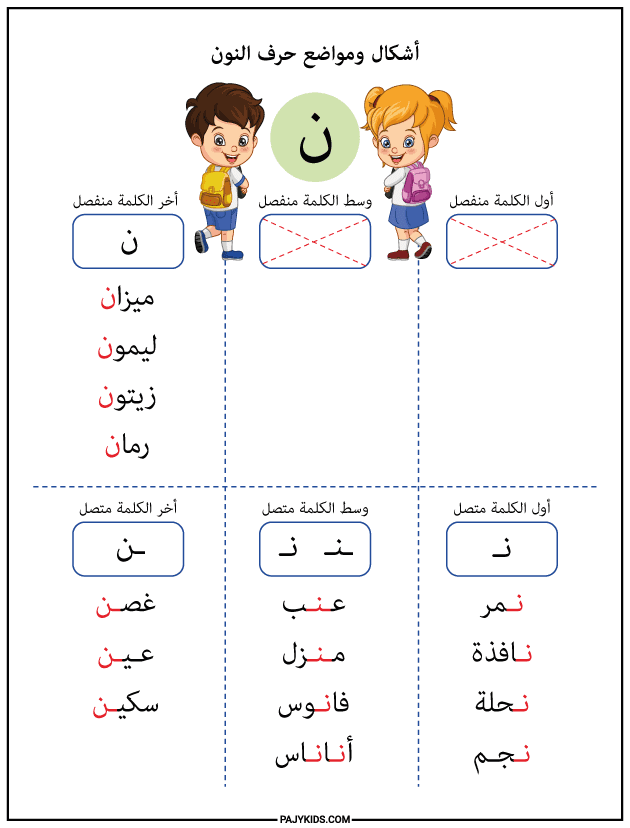
- Form of the Letter Noon at the Beginning of a Word
When the letter Noon appears at the beginning of a word, it connects only to the letter that follows it and is written as: “نـ”.
Examples: نمر (tiger), نافذة (window), نور (light), نحلة (bee), نجم (star).
In this position, the letter appears with a small downward curve below the line and a clear dot above. It is among the most common forms of the letter Noon that learners encounter in everyday vocabulary. It is important to train students to write this form accurately to ensure proficiency in free writing.
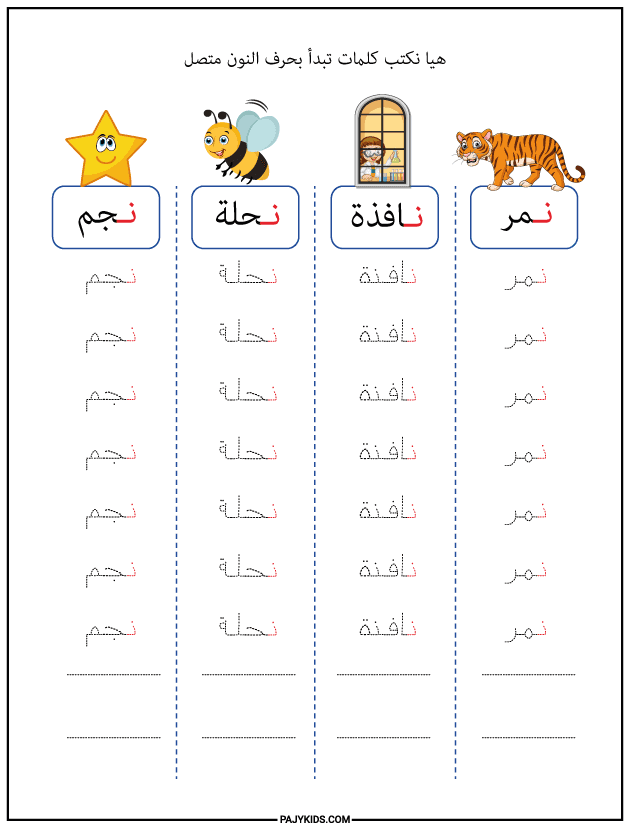
- Form of the Letter Noon in the Middle of a Word
When Noon appears in the middle of a word, it connects to both the preceding and following letters and is written as: “ـنـ”.
Examples: منارة (lighthouse), عنب (grapes), بنات (girls), منزل (house), فانوس (lantern), أناناس (pineapple).
In this position, the letter is seamlessly integrated into the word, while retaining the distinct dot above it. This is one of the more important forms of the letter Noon, as it requires regular practice to master letter connections and improve Arabic handwriting.
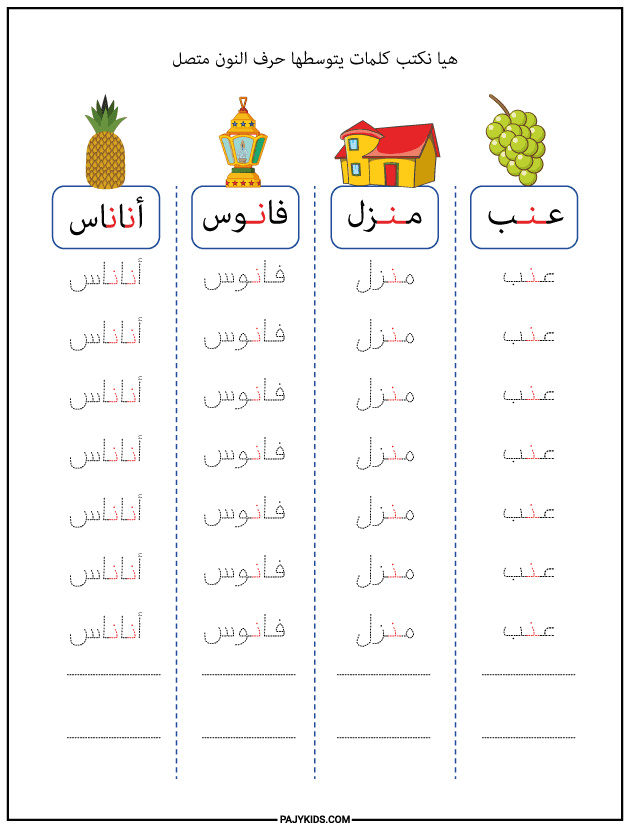
- Form of the Letter Noon at the End of a Word (Connected)
When the letter Noon appears at the end of a word and is connected to the preceding letter, it is written as: “ـن”.
Examples: غصن (branch), عين (eye), سكين (knife).
This form retains the familiar curve of the Noon along with its dot and rests on the writing line. Practicing this form is crucial, as it frequently appears in commonly used words in the Arabic language.
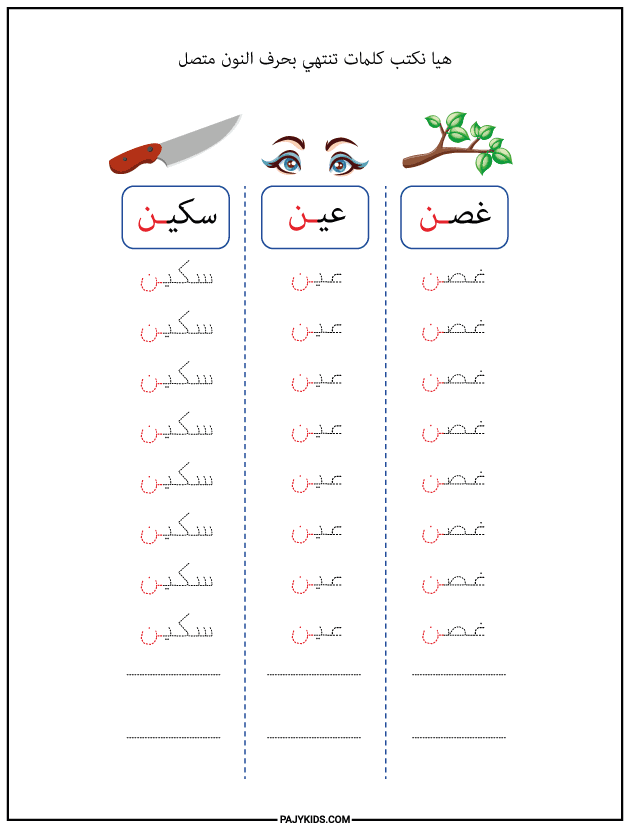
- Form of the Letter Noon at the End of a Word (Isolated)
If Noon comes at the end of a word and follows a letter that does not connect to it, it is written separately as: “ن”.
Examples: ميزان (scale), أذن (ear), ليمون (lemon), زيتون (olive), رمان (pomegranate).
In this isolated form, the Noon appears clearly and independently, maintaining its typical shape and distinct dot. This is one of the easiest forms of the letter Noon to recognize visually, especially for beginners in early learning stages.
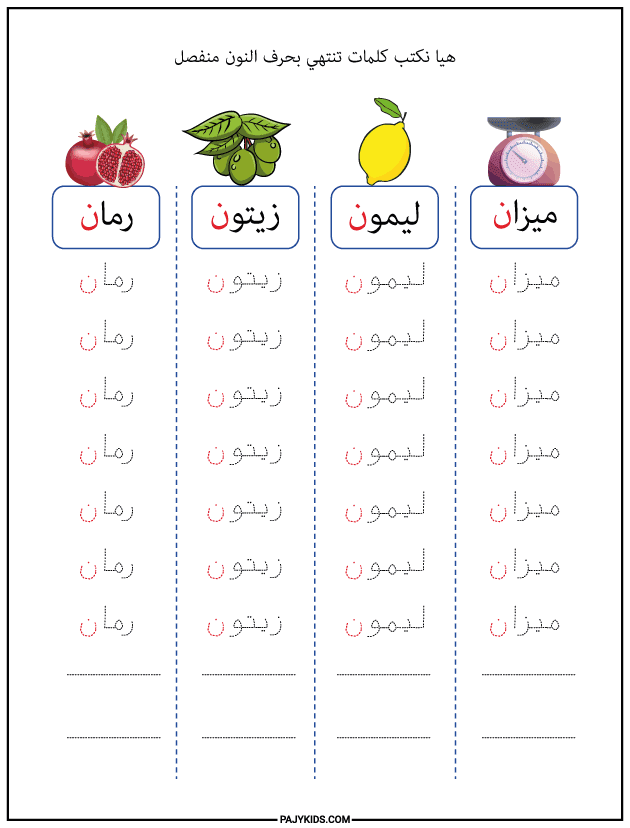
Proficiency in the shapes of Noon helps students distinguish it from visually similar letters such as Baa (ب), Taa (ت), Yaa (ي), and enhances their skills in cursive Arabic writing and accurate reading. Combining visual and written exercises reinforces recognition of the letter’s form and promotes smoother, more precise handwriting. Teachers are encouraged to use flashcards, practical examples, and copy-writing drills to anchor these letter forms in learners’ minds.